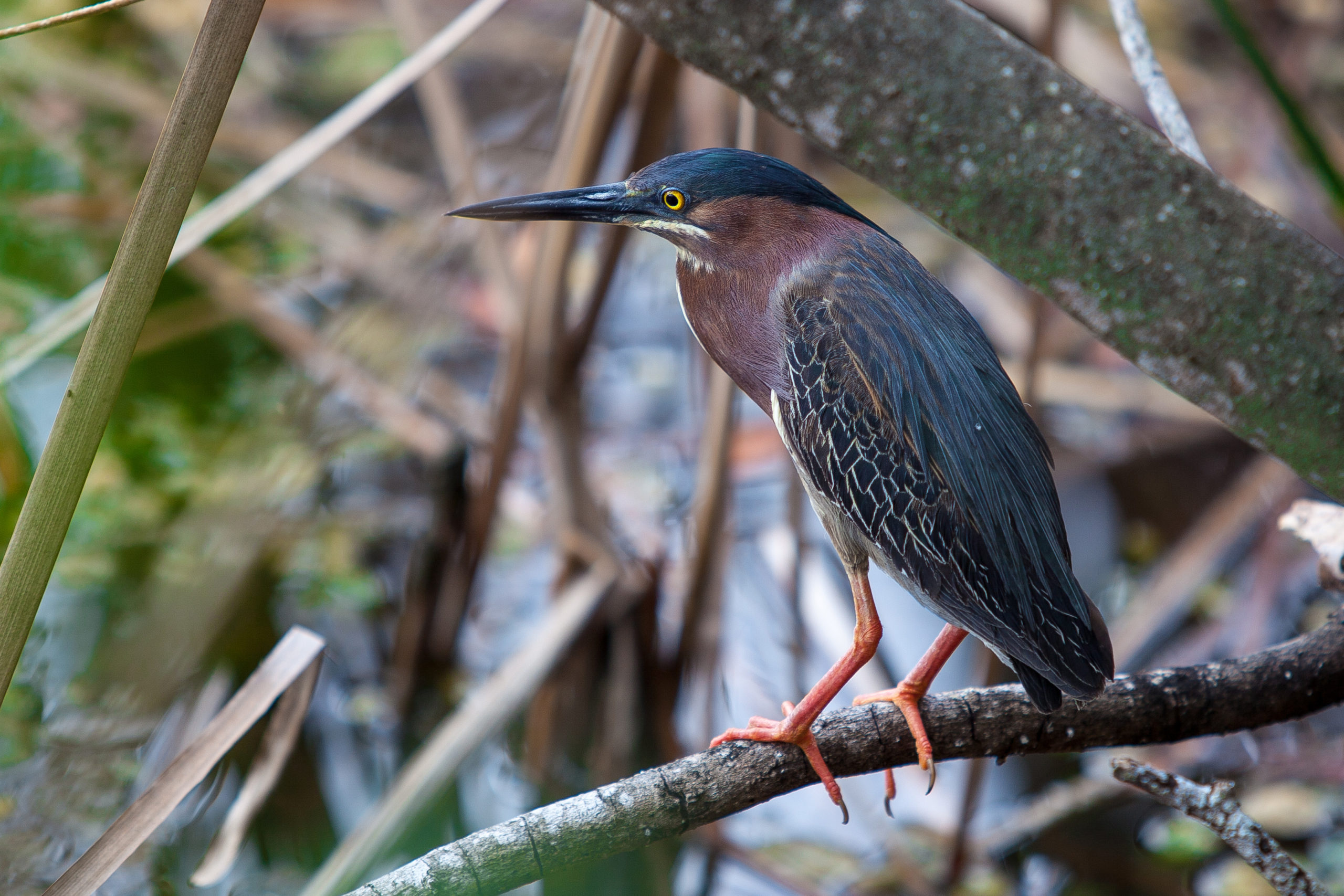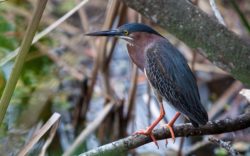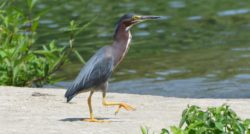
Sea Wonder: Green Heron
The green heron (Butorides virescens) is a commonly seen, small but stockym, wading bird in North and Central America. From afar, their remarkable colors might be hard to see, but their red and gray feathers and iridescent green back and crown are most striking when seen up close and in the right light.
Description
The green heron is a short and stocky bird that is crow-like in appearance. Its neck has a reddish-brown plumage while its back is green-gray with a bluish tint in the sunlight. It has relatively short, yellow legs and a narrow, orange and black beak. Around its eyes are patches of yellow feathers.
Juveniles have a plumage that is almost entirely brown and have pale, white streaks on their necks and wings. As they grow, they molt their feathers and grow their new adult colors and patterns. Adult males and females can reach lengths of up to 18 inches and weights of up to 8.5 ounces (about half a pound). Their wingspans range from 25 to 26 inches across. Comparatively speaking, green herons are similar in size to an American crow and look like one when flying since they hold an s-shaped position and draw their necks back into their bodies.
Diet & Habitat

Juvenile green heron in Monterey Bay National Marine Sanctuary. Photo: Jerry Loomis
Green herons mostly eat smaller fish like minnows, sunfish, and gizzard shad. They will occasionally snack on invertebrates like crustaceans, insects, worms, and amphibians. To forage, they stand very still in the water or walk very slowly along the water’s edge, waiting for unsuspecting prey to come within reach. As they wait, they have their necks folded back onto their shoulders until they stab or catch their prey with their sharp bills. Sometimes they cleverly bait their prey, dropping small objects or insects on the water’s surface to attract fish to the area. They are fairly good swimmers and may occasionally dive for their prey, though this is rare because it requires more energy and involves getting their feathers wet. Snakes and crows will eat green heron eggs, raccoons sometimes eat chicks, and large birds of prey may hunt adult green herons.
Green herons live near aquatic habitats like ponds, marshes, estuaries, mangrove nurseries, and streams. They tend to prefer areas with abundant vegetation, which they use for nesting and hiding. They are common along the entire continental U.S. coastline and migrate as far south as Panama for the winter months. Across the National Marine Sanctuary System, we can find them near almost all of the sanctuaries except for those in the Pacific Islands. Notable sites include Mallows Bay-Potomac River, Florida Keys, and Monterey Bay national marine sanctuaries.
Life History
The green heron generally begins breeding in April. Courtship behaviors males exhibit include swelling their throats, puffing up their neck feathers, and repeatedly snapping their bills shut. They also make sharp calls and, when in front of an available female, hop on one foot. Once females select a mate, they are both involved in creating a nest and take turns incubating the three to six eggs the female lays. The eggs hatch after about three weeks and chicks remain in the nest until they can take their first flight at about a month old. In the first month, their parents feed the chicks by regurgitating into their mouths. Females can produce two broods per year and may lay more eggs shortly after the first brood leaves the nest. The average lifespan for a green heron is about eight years.
Green herons are social, live in colonies, and forage alone or in pairs. They are very vocal birds, communicating with one another by making sharp sounds like, “skiew”, “kuck”, or “kyow.”
Threats & Conservation
Green heron populations appear to be stable throughout their range, but they are difficult to track because of their secretive nature. Threats to these birds include urbanization and habitat loss, pollution, anthropogenic noise, and a changing climate.

Green heron seen in Florida Keys National Marine Sanctuary. Photo: Matt McIntosh/NOAA

